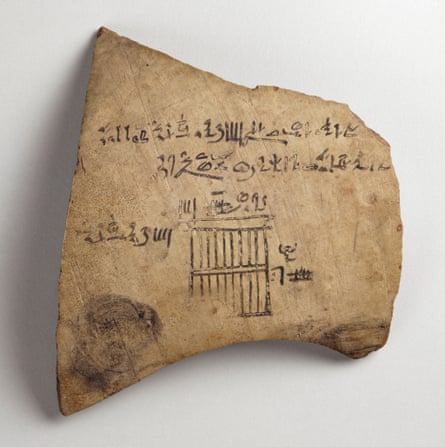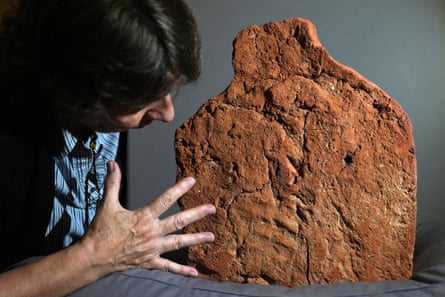More than 3,200 years ago at a workshop near Thebes in Egypt, a man called Nakhtamun grabbed a broken piece of pottery and scribbled on it an urgent order for a craftsman to make him four windows.
“It’s a job to do four of this type exactly. Exactly!” he wrote in hieratic characters, a form of writing derived from hieroglyphics. “But hurry, hurry, by tomorrow. I will let you know!” Beneath his demanding message, Nakhtamun sketched the windows he wanted, with their precise dimensions – the character for “height” is a figure of a tiny person with their arms raised aloft.
This humble piece of rubbish, presumably discarded after the order was fulfilled, is one of the treasures of a new exhibition at the Fitzwilliam museum in Cambridge, focussing on the everyday workers who built some of the most famous sites in ancient Egypt, and the technology and techniques they used to do so.

These were the stonemasons, coffin makers and royal sandal makers who lived near Thebes and worked in the site of the tombs of the pharaohs. Though the sites they helped build would come to be revered in the millennia that came after, the daily lives of the skilled workers who made them have been overlooked until now, according to Helen Strudwick, a senior Egyptologist at the Fitzwilliam who has curated the exhibition. This is the first such exhibition anywhere in the world, according to the museum.
“What can often happen with ancient Egyptian objects is that we look at the outer surface to see what they tell us about mythology or [their beliefs about] the afterlife,” said Strudwick. “But if you look at the items from a slightly different point of view, you get a deeper relationship with the people of ancient Egypt, and you can actually meet these people almost face to face.”
Much of the exhibition focusses on ostraca – pieces of stone or pottery – that were picked up by a worker and written or doodled on like ancient reused envelopes. One limestone shard records absences from work on the royal tombs: on one day, a worker called Panebu was off sick after being bitten by an unnamed creature. The foreman, Ramery, also fell ill on another day when five other workers “did not work”.
Another slab has a carefully drawn grid overlaying images of a cat, lion and ibex, intended as a drawing guide for those illustrating the tombs. On one chipped piece of limestone, someone has written a receipt for decorating a coffin, costing the equivalent of three months’ wages. Many items are on loan from the Louvre in Paris, the most significant loan from its ancient Egyptian collection in 20 years, according to Strudwick.

“What we learn from these items is that there was pressure to get work done in the same way that there is nowadays,” said Strudwick. “We see their fantastically skilled work and then occasionally there’s a little blemish where the person has accidentally left a fingerprint. . That’s really what I hope people come away with.”
-
Made in Ancient Egypt is at the Fitzwilliam Museum in Cambridge from 3 October 2025 to 12 April 2026

 2 months ago
62
2 months ago
62

















































